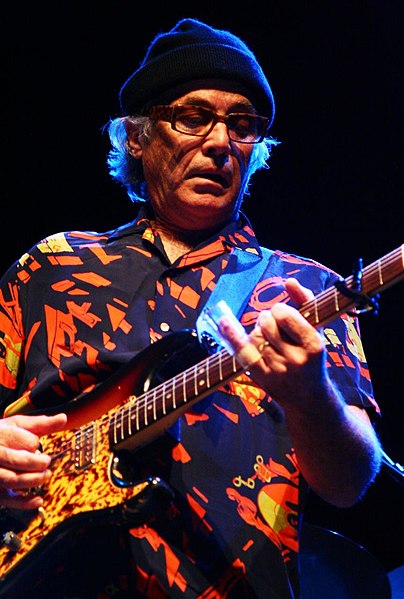Ralph Oliver Patt was an American jazz guitarist who introduced major-thirds tuning. Patt's tuning simplified the learning of the fretboard and chords by beginners and improvisation by advanced guitarists. He invented major-thirds tuning under the inspiration of first the atonal music of Arnold Schoenberg and second the jazz of John Coltrane and Ornette Coleman.
Ralph Patt invented major-thirds tuning, which he played on eight-string guitars.
In music, a guitar chord is a set of notes played on a guitar. A chord's notes are often played simultaneously, but they can be played sequentially in an arpeggio. The implementation of guitar chords depends on the guitar tuning. Most guitars used in popular music have six strings with the "standard" tuning of the Spanish classical guitar, namely E–A–D–G–B–E' ; in standard tuning, the intervals present among adjacent strings are perfect fourths except for the major third (G,B). Standard tuning requires four chord-shapes for the major triads.
Ry Cooder plays slide guitar using an open tuning that allows major chords to be played by barring the strings anywhere along their length.
The Who's Peter Townshend often used a theatrical "windmill" strum to play "power chords"—a root, fifth, and octave.
Paul McCartney used an A-major I–IV–V7 chord progression in "3 Legs", which is also an example of the twelve-bar blues.
Johnny Marr is known for providing harmony by playing arpeggiated chords.





